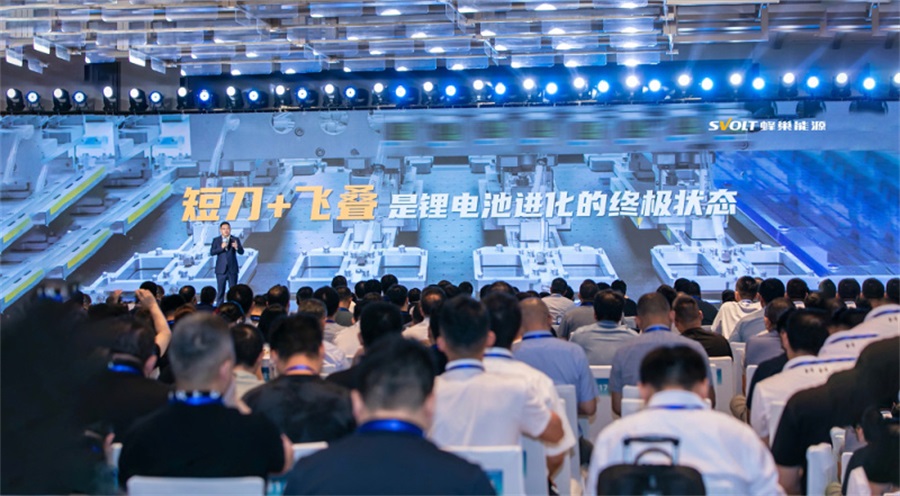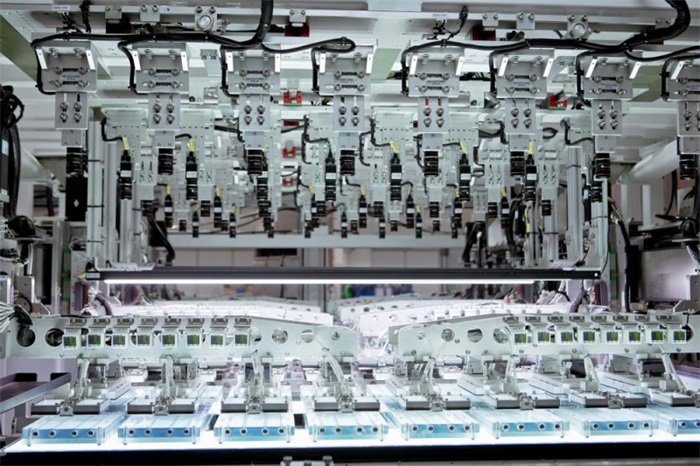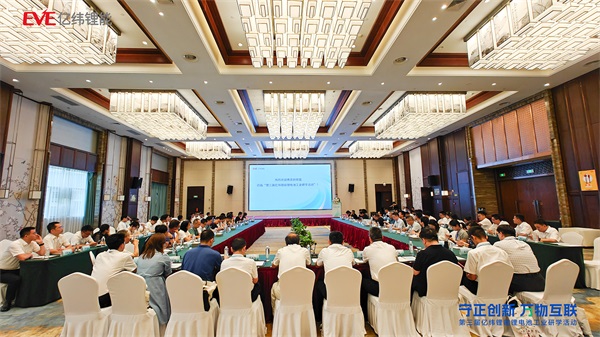Five Years to Forge the “King of Short Blade Batteries”: svolt Energy’s Steady Rise
The current price war in the automotive market is driving every link in the supply chain to seek optimal cost reduction and efficiency improvement solutions, with power batteries being a key focus.
However, the lack of standardization in battery shapes and sizes has limited the production efficiency of the industry. Before 2021, nearly every vehicle model required its own customized battery production line. This led to fluctuating capacity utilization rates due to varying sales volumes of different models, causing significant challenges for battery manufacturers and excessive costs for automakers each time a new battery was developed.
Fortunately, in recent years, battery specifications have gradually become clearer through exploration. Rectangular batteries, which are most commonly used in the power market, have increasingly moved towards the "short blade" design. Many battery companies and OEMs, including Svolt Energy, CATB, Gotion High-tech Co., Ltd., BYD, YaoNing Technology Group, and GAC e, are now focusing on and expanding the production of short blade battery products.
The Emergence of Short Blade Batteries: A New Era for Standardized Production
The advent of short-blade batteries has provided an opportunity for standardizing battery specifications, offering a glimmer of hope for streamlined production across the industry. This marks the beginning of a new phase aimed at further improving yield rates and reducing costs.

Among the companies producing mass-market short blade batteries, Honeycomb Energy has been the earliest and most committed, showcasing the most advanced technology and achieving the most notable results. From January 2023 to July 2024, Svolt Energy shipped a total of 151,357 short blade batteries, amounting to 5.41 GWh, making it the global leader in this segment.
Thanks to the boost from short blade batteries, Svolt Energy's installations reached 6.15 GWh in the first half of 2024, representing a 201% year-on-year increase, the highest growth rate among the top 10 domestic battery companies.
Svolt Energy's CEO, Yang Hongxin, has consistently believed that "Short blade + stacking is the ultimate state of lithium battery evolution." The success of their short blade battery technology has roots that trace back to seeds planted five years ago.
Creating a New Category of Short Blade Batteries: The Optimal Solution for Rectangular Batteries
In 2019, Honeycomb Energy introduced the industry’s first short blade battery at the Shanghai Auto Show. At that time, rectangular battery specifications were diverse, with different cell sizes being used even within the same model but varying by capacity, making standardization challenging.
Svolt Energy chose the short blade design and committed to it without hesitation. In 2021, with the mass production of the first generation of short blade cells, Svolt Energy announced the creation of a new short blade category and promoted universal adoption of the short blade design. Since then, the company has been advancing the mass production of short blade products across commercial vehicles, passenger cars, and energy storage markets.
Svolt Energy has steadfastly pursued a differentiated competition strategy, using short blade batteries to break into the market. Why choose short blade? Yang Hongxin shared that the company went through extensive simulations to determine the most suitable height, width, capacity, and thickness by arranging batteries in various dimensions such as 200mm, 300mm, 400mm, and 500mm for different vehicle models.
“Internally, we often held meetings, at least 2-3 times a month, to discuss the short blade initiative. To get this right, the development for the next five years should be problem-free.”
In addition to cell selection, Yang Hongxin also believes that for the automotive end market, vehicles under 200,000 RMB should use long-range PHEVs, while those over 200,000 RMB should use 800V fast-charging pure electric vehicles.
Svolt Energy's short blade products cater to both PHEV and pure electric vehicle needs.
On one hand, in the design of PHEVs, Svolt Energy’s short blade batteries can perfectly avoid the exhaust pipe, achieving high integration and high capacity, which meets the current demand for “large capacity PHEVs.”
Models like the Ideal L series and Leap Super Extended Range series, which use batteries with capacities generally exceeding 40 kWh, see significant improvements in pure electric range. Some of these models are equipped with Svolt Energy’s short blade batteries, giving them strong market competitiveness. In terms of installation volume, Honeycomb Energy's PHEV market installation reached 5.6 GWh in 2023, a staggering 409.1% increase year-on-year. In 2024, Svolt Energy introduced the 800V+4C fast-charging hybrid Dragon Scale product, with a range of over 350 km, elevating the PHEV market to a new level.
On the Other Hand: Short Blade Batteries in the Pure Electric Market
In the pure electric vehicle market, Honeycomb Energy's short blade products offer higher assembly efficiency compared to traditional VDA cells and demonstrate superior system energy density. They are also better suited for fast charging than long blade cells. Additionally, their thermal-electrical separation design enhances the pure electric vehicle's range, speeds up charging, and improves safety.

Yang Hongxin's predictions have been validated. Today, pure electric vehicles priced above 200,000 RMB prominently feature fast charging as a key selling point. In fact, 800V fast charging has even been introduced in models priced as low as 170,000 RMB. Fast charging has become a primary method for alleviating owner anxiety regarding electric vehicles. Short blade batteries have thus flourished with the fast charging trend.
Svolt Energy’s extensive simulations and research, coupled with a five-year commitment, have yielded substantial returns. Short blade batteries are now widely recognized as the optimal solution for rectangular batteries, with more companies joining the short blade movement. As the pioneer in short blade batteries, Honeycomb Energy leads in shipment volumes.
Continuous Innovation to Stand Out with Product Strength
Svolt Energy, being the earliest adopter of short blade batteries and the leader in shipment volumes, stands out among competitors due to its product strength.
At the cell level, material innovation is the cornerstone of product strength. Svolt Energy’s second-generation short blade cells utilize self-developed lithium iron phosphate(Lifepo4 battery) materials and high-performance small particle graphite anodes, laying a solid foundation for performance.
Improvements in separators are also noteworthy. Svolt Energy employs a globally pioneering asymmetric separator design, using different binders on each side of the separator. One side is more compatible with the anode, while the other is more compatible with the cathode.
Additionally, the use of new adhesive materials ensures that the separator remains free of powder and debris during continuous cutting, guaranteeing extremely high cleanliness. This combination enhances the performance of the second-generation short blade cells.
Material innovations ensure cell performance, while manufacturing processes are crucial for cell yield and efficiency. From the onset of its commitment to the short blade route, Honeycomb Energy decided to use the stacking process for mass production.
In battery cell production, there are two main mainstream techniques: winding and stacking. Traditional battery production primarily uses the winding method, which has been established for over a decade and is both mature and stable. The stacking process, on the other hand, began to be scaled up in production as the volume of automotive power batteries increased.
Compared to Winding, Stacking Technology Offers Superior Efficiency
Stacking technology makes better use of the gaps created at the corners of separators and electrode sheets, resulting in higher volumetric efficiency. For batteries of the same size, stacking technology can offer about 5% higher volumetric energy density compared to winding technology, along with significant advantages in safety and lifespan.
While stacking technology provides better cell performance, it also presents greater challenges. The main issues are production time and space efficiency. The stacking process requires intermittent layering of positive and negative electrodes on the separator, with each stacking operation involving electrode switching and separator folding, which extends production time for cells of the same size.
To address these challenges, Honeycomb Energy developed the high-integrated third-generation high-speed stacking technology known as "Flying Stack."
"Flying Stack" begins not with direct folding of the separator but with a “pre-treatment” step: positive electrode sheets are wrapped with two layers of separator material and then heat-combined and edge-sealed with rollers before being cut into sheets.
This unique "thermal bonding" process effectively addresses issues such as separator wrinkling and electrode powder shedding during subsequent stacking, and it also increases electrolyte storage space by 2%, which aids in achieving long cycle life for fast-charging cells.

The next step is stacking, where Flying Stack technology allows for simultaneous stacking of eight cells at once, achieving a speed of 0.125 seconds per cell, which is four times faster than traditional stacking machines. This production efficiency is now comparable to winding technology. With an overall yield of 94%, Honeycomb Energy’s short blade cells not only demonstrate strong product performance but also possess the capability for large-scale supply to automakers.
Through innovations in materials and optimization in manufacturing, Svolt Energy’s short blade products have become an excellent combination of high energy and ultra-fast charging, aligning well with current automotive demands. Many automakers are beginning to recognize this product, and battery companies are following suit.
It’s noteworthy that BYD, which primarily uses long blade technology, has also recognized the advantages of short blade batteries. They have adopted short blade batteries in models like the Leopard 5, Xiaomi SU7, and the upcoming Leopard 8. This is a significant signal, reinforcing the clear advantages of short blade over long blade technology.
Short blade batteries require fewer adjustment parameters, making them an ideal path for achieving large-scale production for battery companies. For automakers, they allow for platform-based cells with minor modifications, offering substantial benefits for cost reduction and new vehicle development.
This is why more and more companies are beginning to endorse short blade technology. Svolt Energy has been deeply involved in this field and is already reaping the rewards.

